Restoring A Sensitive Ecosystem, One Wildflower At A Time
5:47 minutes
This article is part of The State of Science, a series featuring science stories from public radio stations across the United States. This story, by Barbara Moran, was originally published by WBUR.
Tim Boland stood next to his black pickup on a dirt road in Edgartown, and waited for a moment. Then, he started handing out wildflowers.
“Who would like a flat?” he called to the dozen-or-so volunteers standing nearby. As they eagerly trotted over to the truck, Boland handed out black plastic trays, each holding fifty seedlings of New England blazing star.
“It’s specialized to New England,” said Boland, executive director of the Polly Hill Arboretum in West Tisbury. He held up a grassy-looking seedling, which did not look like a blazing star — at least not yet. “It’ll form these button-like flowers that are a deep indigo blue, that are just gorgeous. It’s a spectacular plant to see in bloom.”
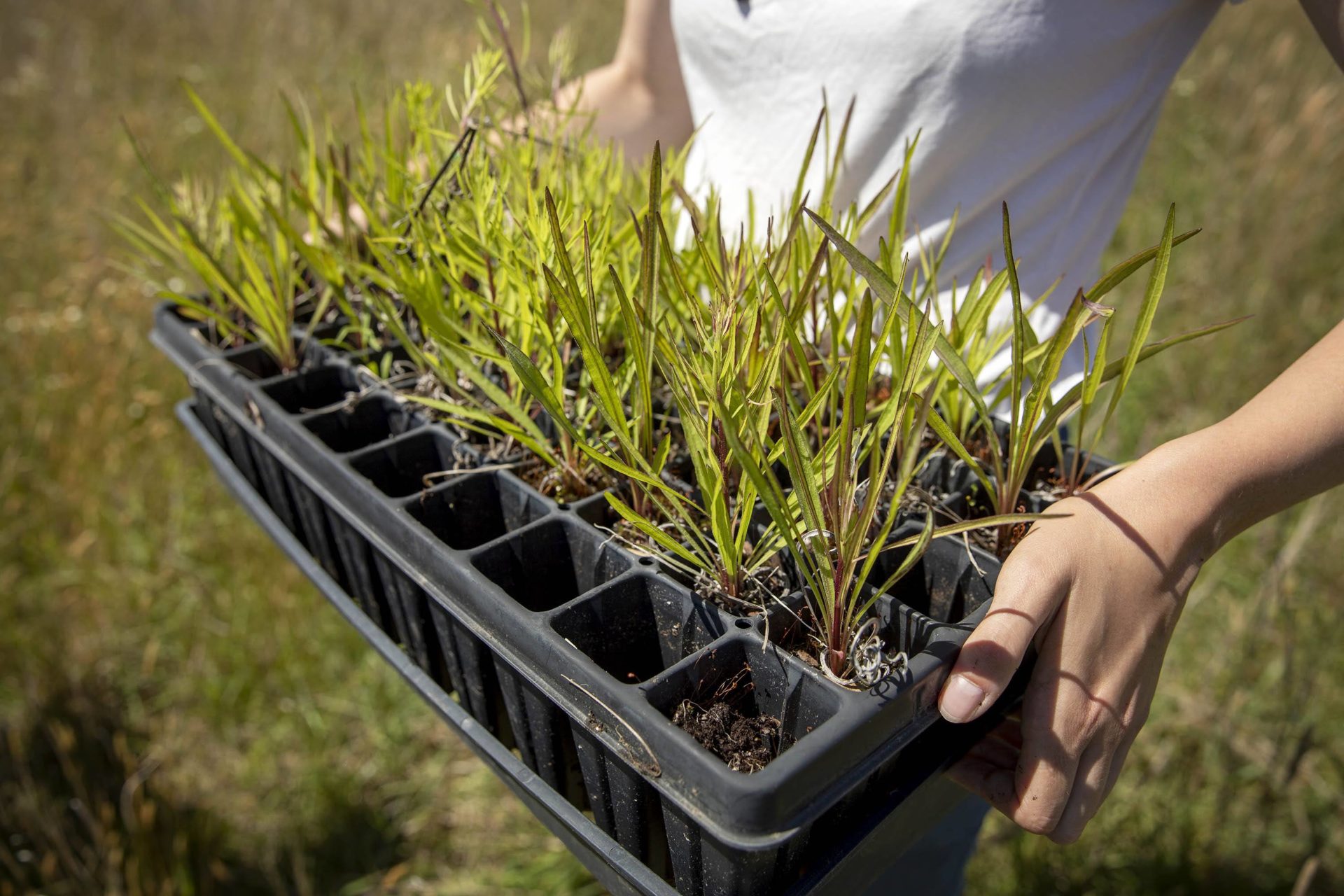
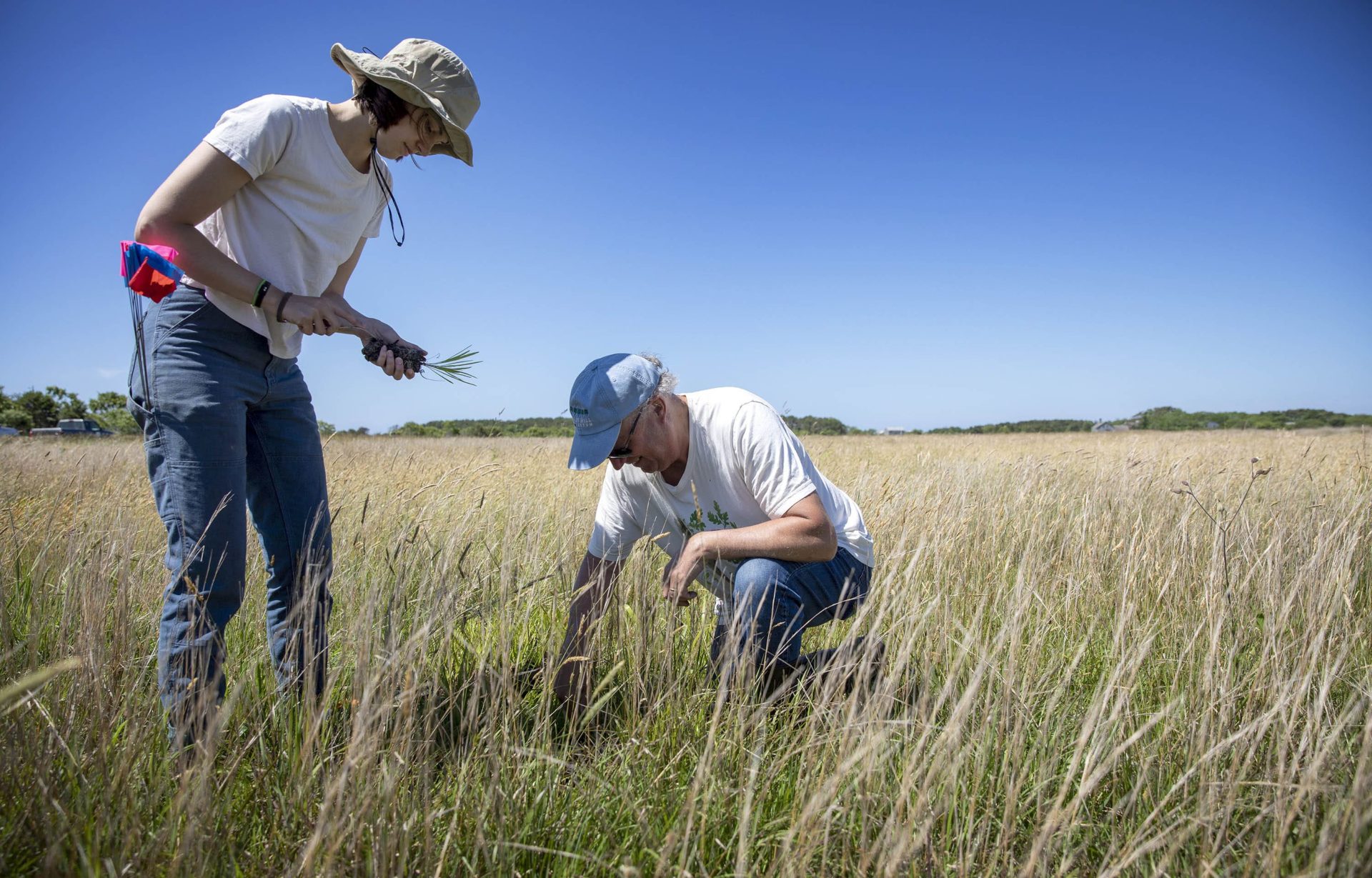
The New England blazing star is more than just a pretty blossom: it’s an integral part of a globally-rare ecosystem called a “sandplain grassland.” Just like the name suggests, sandplain grasslands have sandy soil with tall grass, no trees and an exceptionally high number of rare plant and animal species.
That includes plants like the New England blazing star, an important food source for various grassland insects. Today volunteers would plant 1,000 of them to help restore Bamford Preserve, a 60-acre parcel of sandplain grassland on Martha’s Vineyard.
As climate change threatens both human health and the natural world, experts say that protecting biodiversity hotspots like this one will offer the most bang-for-the-buck — protecting threatened species while offering other ecosystem benefits, like open space and flood protection.
But restoration work is expensive: The Nature Conservancy in Massachusetts has been restoring Bamford Preserve from farm field to sandplain grassland for 15 years, at a cost of $15-$20,000 per year. As the climate crisis grows and money tightens, there will be tough choices about what to save, and what to leave behind.
“In conservation, there are limited resources and you want them to have the greatest impact on biodiversity and on the function of ecological systems,” said
Michael Piantedosi, director of conservation with the Native Plant Trust. Piantedosi is not involved with the Bamford Preserve restoration, but says sandplain grasslands are an ecosystem worth saving.
“The reason for investing in that habitat now is so that it has the right makeup and conditions to be able to adapt to climate change going forward,” he said. “All this ecology is connected and you don’t necessarily know what piece will tip the balance in what direction.”
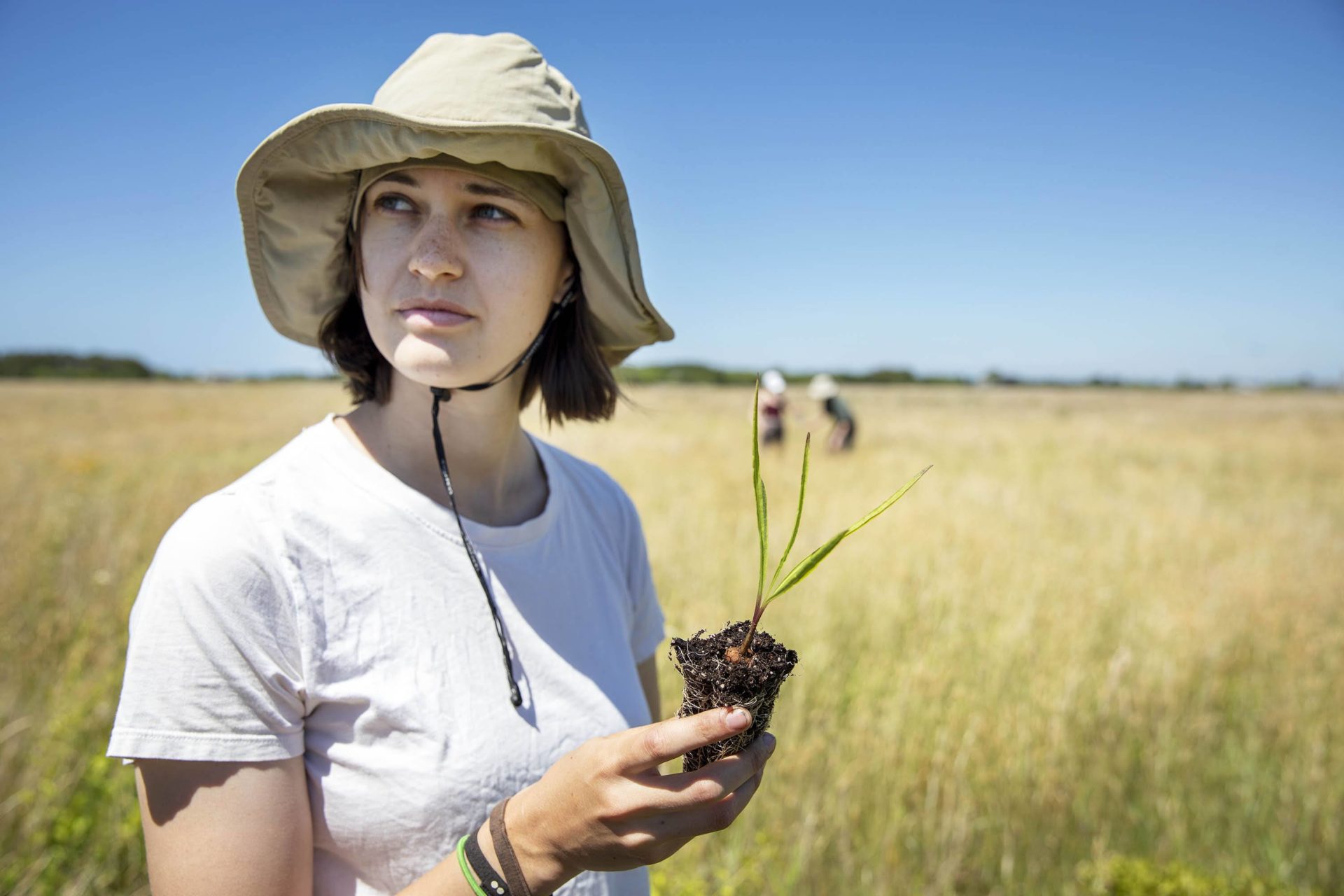
Sandplain grasslands are found only along the Atlantic Coast from New York to Maine, and most patches are in Massachusetts. Seven rare species of birds use this habitat, including grasshopper sparrows and short-eared owls, as well as beetles, butterflies and wildflowers, like the New England blazing star, found almost nowhere else.
“These little systems right here hold a high concentration of rare and uncommon species in the region,” said Mike Whittemore, stewardship manager for The Nature Conservancy in Massachusetts. “It’s not only the plants, but it’s the wildlife, the pollinators, the things that you don’t always see.”
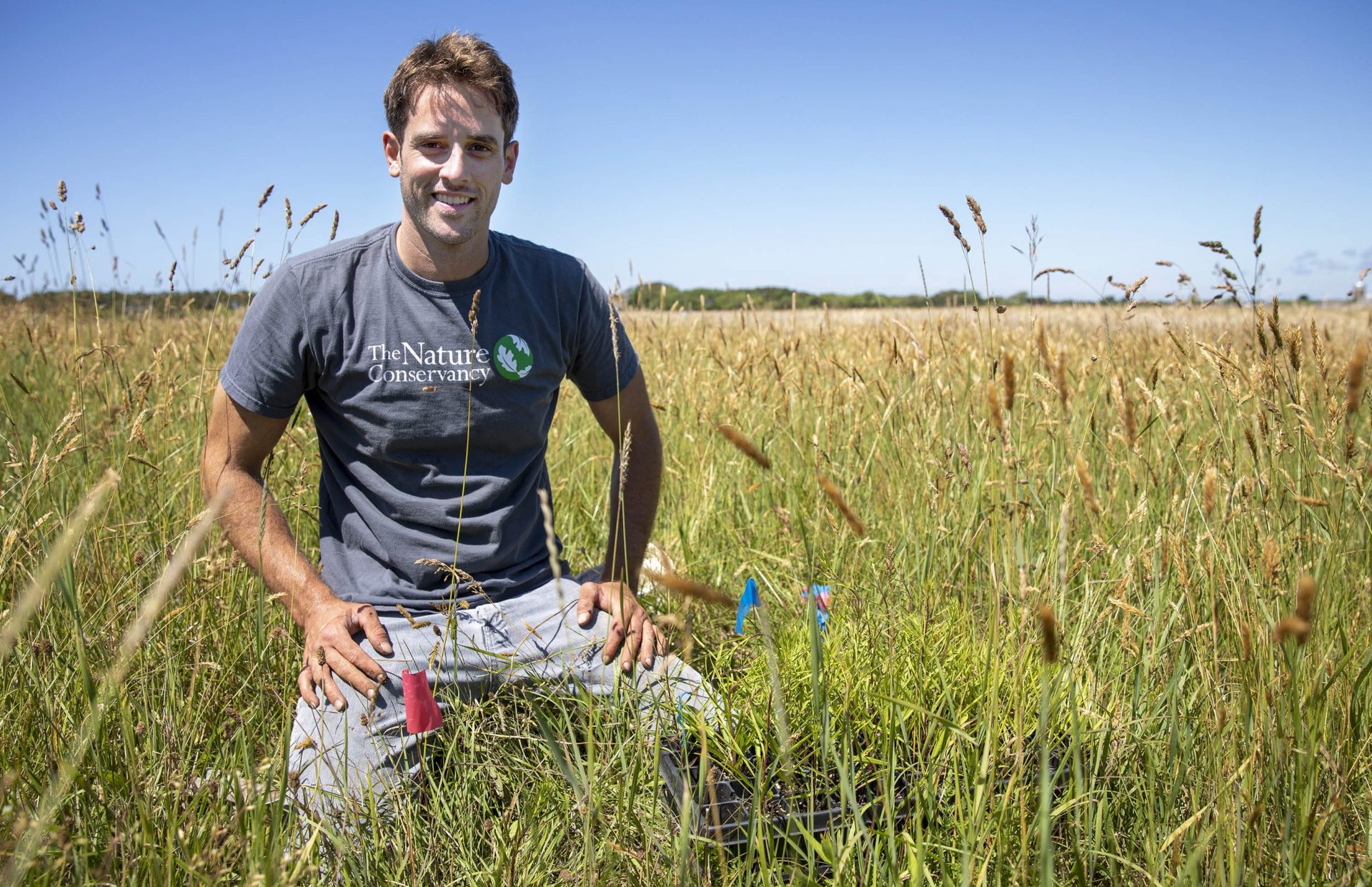
At this stage of restoration Bamford Preserve doesn’t look like much of a biodiversity hotspot – just a huge field of tall grass and occasional wildflowers, waving in the wind. But even getting to this point has required years of painstaking work.
For example, Tim Boland had to get a special permit to grow New England blazing star because it’s a “species of special concern” in Massachusetts. He collected seed from native wildflowers on the island and carefully cultivated them for two years.
And even after the intensive restoration wraps up in a couple years, Mike Whittemore says the grassland will require maintenance — like controlled burns and occasional mowing — indefinitely.
“There was such a harsh land use history for so many years — it was planting of non-native plants and it was haying and it was plowing,” he said. “When you come through here and plow, it does something in the soil. You need to stay on it to keep it open.”
One of the volunteers, Janet Woodcock from Vineyard Haven, said it’s worth the hard work to preserve or restore the island’s remaining wild spaces, especially in the face of climate change.
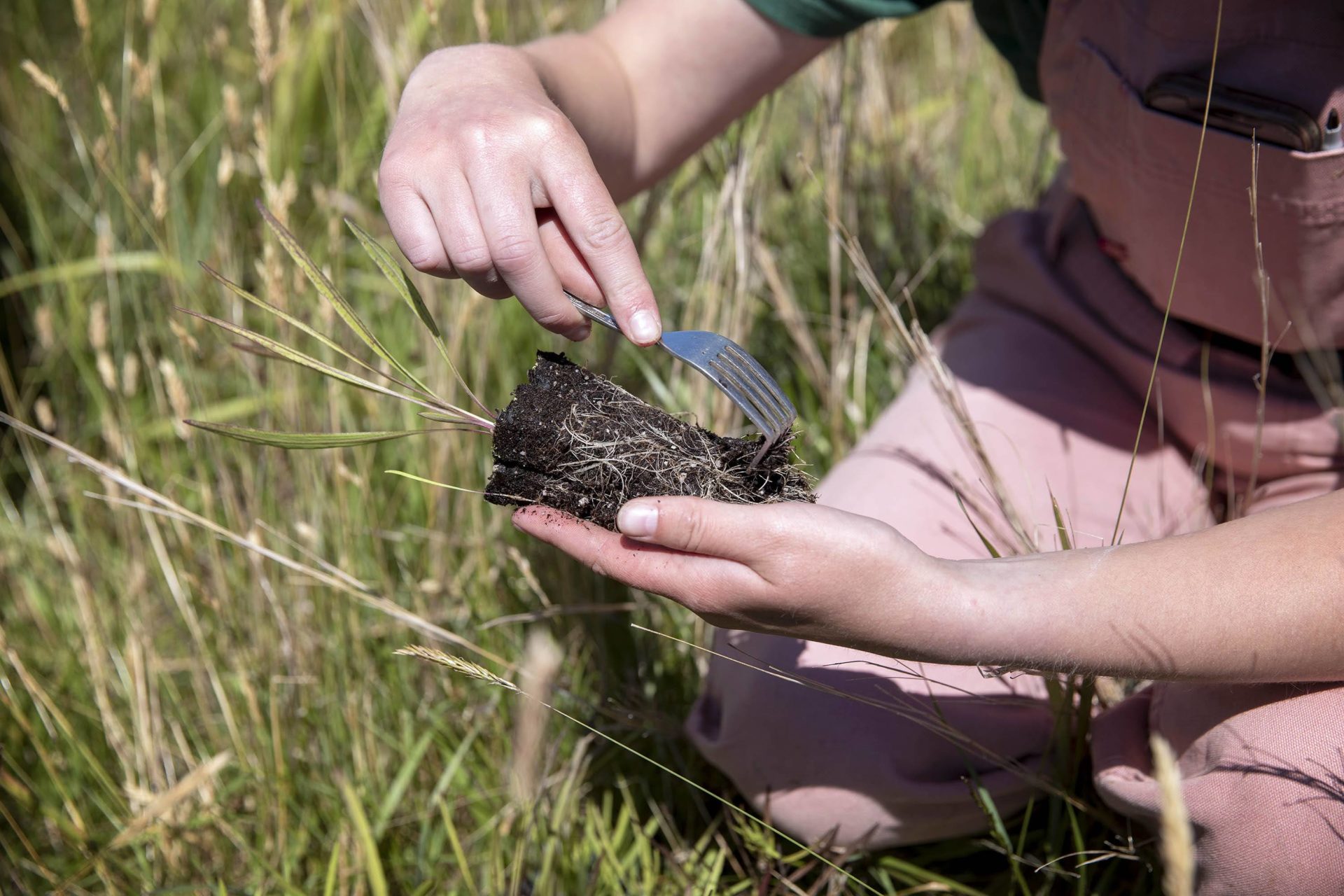
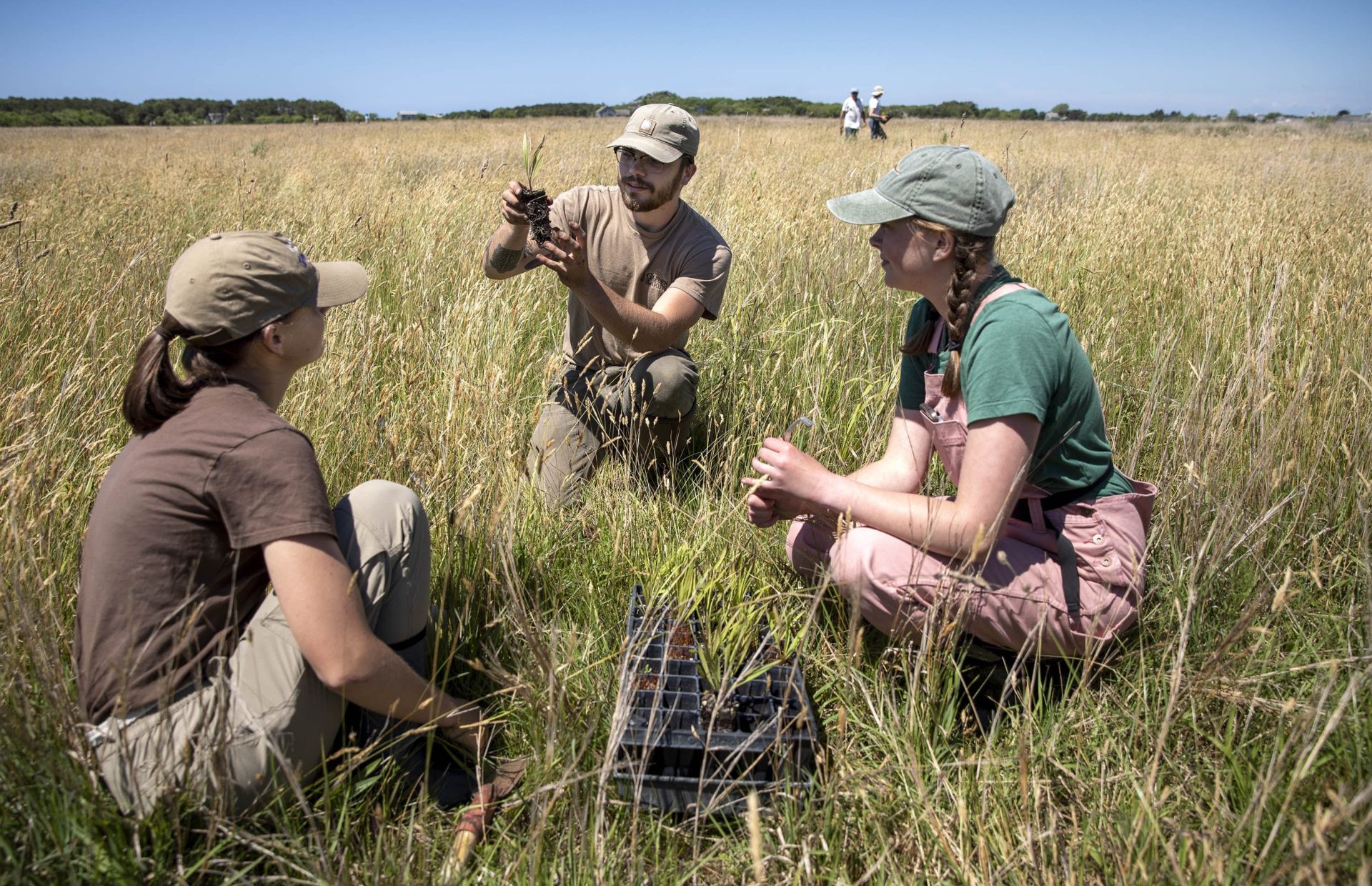
“I mean, the climate has been changing since the Earth started, whenever that was. But it’s happening so quickly that living things don’t have time to adjust to the changes. And so we’re losing species because of that,” Woodcock said. “Anything has a hard time adapting if it happens too quickly.”
Mike Boland, from Polly Hill Arboretum, says stocking the grassland with native plants like the New England blazing star will give all plants and animals living here the best chance of surviving.
“These plants — more than most — have a 14,000 year evolutionary advantage of growing in these ecosystems,” he said. “So there will be plants that persist even with these rough conditions coming on.”
Boland says preserving diverse ecosystems like this is one of our best defenses in the face of a changing climate. For him, he says, it’s an act of hope.
Invest in quality science journalism by making a donation to Science Friday.
Barbara Moran is an Environment Correspondent at WBUR in Boston, Massachusetts.
IRA FLATOW: This is Science Friday. I’m Ira Flatow. And now it’s time to check in on the State of Science.
SPEAKER 1: This is KERA News.
SPEAKER 2: For WWNO.
SPEAKER 3: St. Louis Public Radio.
SPEAKER 4: Iowa Public Radio News.
IRA FLATOW: Local science stories of national significance. Martha’s Vineyard, you know it as a beautiful island off the coast of Massachusetts. And like many idyllic places in the US, development has threatened the island’s ecosystem. In this case, it’s the sand plain grassland found there, a rare ecosystem.
But taking up the challenge is a team of volunteers shouldering a daunting task to plant 1,000 wildflowers to rehab the area. Joining me is Barbara Moran, environment correspondent at WBUR in Boston. Welcome back to Science Friday.
BARBARA MORAN: Thanks, Ira. Great to be here.
IRA FLATOW: Nice to have you. OK, give us some more information. The Bamford preserve, paint a little word picture for us, will you, please?
BARBARA MORAN: Sure. So the preserve is about 60 acres. And as you said, it’s called a sand plain grassland. And what that means is the soil is very sandy. And when you look at it, it doesn’t look like much. I went out there, and I was like, oh, grass, right? So it’s this huge, grassy field with sort of knee-high tall grass waving in the wind. And but there’s no trees. There’s nothing sort of– there’s no magnificent sequoias or anything out of it. But it’s this huge open field with knee-high grass.
IRA FLATOW: But it’s a really rare kind of place, right?
BARBARA MORAN: Yeah, it’s called a globally rare biodiversity hotspot, right? So this type of ecosystem is found only on the East Coast between New York and Maine. And most of the remaining sand plain grassland is actually in Massachusetts. And so when I went out there to the vineyard, I spoke with Mike Whittemore. He’s the stewardship manager for the Nature Conservancy in Massachusetts, and he’s overseeing this restoration.
MIKE WHITTEMORE: These systems right here, these little systems right here, hold a high concentration of rare and uncommon species in the region. So it’s not only the plants, but it’s the wildlife, the pollinators, the things that you don’t always see.
BARBARA MORAN: So, like I said, it doesn’t look like much to the untrained eye, but there are a couple species of birds that depend on grasslands like this and a couple species of beetles and butterflies that are found almost nowhere else in the world.
IRA FLATOW: Right, so what’s the development threat around the Bamford preserve?
BARBARA MORAN: So this area used to be a farm. It was a hayfield, and it came up for sale about 15, 20 years ago. And it was slated for development. The vineyard, like many places, is under huge pressure for people who want to build summer homes there. And the Nature Conservancy kind of swooped in and was able to buy it. So if they hadn’t bought it, this would have been developed into condos or giant summer homes.
IRA FLATOW: Right. Let’s talk about the goal here. Now, this is to plant 1,000 wildflowers. Tell me about that.
BARBARA MORAN: Yeah, so the day I was there, that’s what they were doing. But the restoration started about 15 years ago. And what they had to do was take this field, which had been torn up and planted with non-native plants for years and years, and figure out how to restore it, right?
So they got the Marine Biological lab involved. They put out all these sample plots to see what to do. And they started a few years ago with planting native grasses. And then last year, they started planting wildflowers. And this year, they planted 1,000 wildflowers called the New England blazing star, which is specialized to sand plain grasslands.
And even now, it was like so much work. I couldn’t believe it. They had to go around the vineyard and get seeds from the existing wildflowers and grow them for two years, and then get them out to plant them. And all these volunteers go out trudging through the grass and planting 1,000 flowers by hand. So that’s what they were doing the day I was out there.
IRA FLATOW: Right, so if you get all these thousands of plants growing there, does that make the area little more amenable to the changing environment we’re going through?
BARBARA MORAN: Right, and that was my question. I was saying like, well, if the climate’s changing, right, and it’s going to get hotter and wetter or whatever, does this make sense, right? Does this make sense to plant all these native species? Are they just going to die in five years, right?
And I put that question to Mike Boland. He’s the director of Polly Hill Arboretum on Martha’s Vineyard. And he was the guy who went out and collected all the seeds and spent all the time cultivating these wildflowers. And he argues that native plants have a better shot at adapting to climate change. Here’s what he said.
MIKE BOLAND: These plants, more than most, have a 14,000-year evolutionary advantage of growing in this ecosystem. So there will be plants that persist, even with these rough conditions coming on. So it’s really– it’s doable.
IRA FLATOW: Wow, so the plants will be around probably a lot longer than maybe some of the people there.
BARBARA MORAN: Yeah, that’s what they think, you know? I mean, they’ve been through a lot, these plants, right? They’ve been there for thousands of years as the ecology has changed and the climate has changed. So hopefully they’ll make it through this next phase of the climate emergency.
IRA FLATOW: Well, Barbara, thank you very much. Wishing you a cool summer.
BARBARA MORAN: You, too, Ira.
IRA FLATOW: Barbara Moran, environment correspondent at WBUR in Boston, Massachusetts.
Copyright © 2022 Science Friday Initiative. All rights reserved. Science Friday transcripts are produced on a tight deadline by 3Play Media. Fidelity to the original aired/published audio or video file might vary, and text might be updated or amended in the future. For the authoritative record of Science Friday’s programming, please visit the original aired/published recording. For terms of use and more information, visit our policies pages at http://www.sciencefriday.com/about/policies/
Kathleen Davis is a producer and fill-in host at Science Friday, which means she spends her weeks researching, writing, editing, and sometimes talking into a microphone. She’s always eager to talk about freshwater lakes and Coney Island diners.
Ira Flatow is the founder and host of Science Friday. His green thumb has revived many an office plant at death’s door.